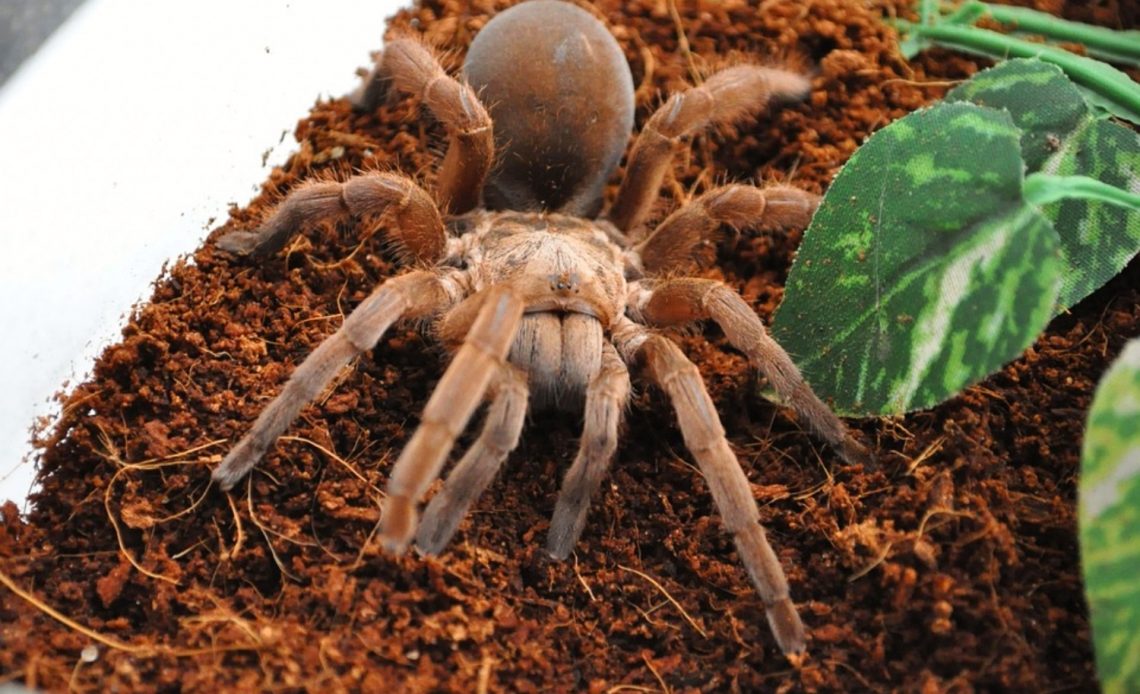

We’re here to help! Wild Yards is a completely free website that is 100% dedicated to helping you create a wildlife-friendly, sustainable yard. Read more
WildYards is reader-supported. When you buy a product through a link on our site, we may earn a comission. Every product is independently selected by our (obsessive) editors and our reviews are unbiased and objective. Read more about our mission or our privacy policy.
Maybe you keep a few plants indoors to purify the air and add a splash of color. Or, maybe you just bring your potted plants inside during the winter to keep them from freezing to death. Whatever the case may be, it would be a wise decision to check the soil of your potted plants pronto, because they may be playing host to arachnids. Although spiders play an invaluable role within the ecosystem, they make for some creepy roommates. So today, we’re going to learn how to identify and remove spider eggs in plant soil.
Spider eggs can be really small, but you may find yellow, white, or tan egg sacs in the soil near your plants. Allowing plants to dry out completely between waterings, applying neem oil, and releasing predatory insects can help you tackle spider invasions.
What do spider eggs look like?
Spiders lay eggs, but they don’t just leave the eggs in the soil to hatch unprotected. These eggs are highly susceptible to predatory insects, so in an effort to keep them safe, female spiders create silk sacs and lay their eggs inside of them. Some spider species, like wolf spiders and crab spiders, may only lay a few dozen eggs at a time. But other species, including jumping spiders and nursery web spiders, can lay hundreds of eggs at once.
Spider egg sacs vary in size and color. Larger spiders typically produce egg sacs that are several centimeters in diameter, while the egg sacs of smaller species usually only measure a few millimeters in diameter. Most common spider species produce egg sacs that are white, yellow, or tan. Regardless of what spider egg sacs look like on the outside, they’re each designed to shelter the tiny spiderlings as they hatch.
Some spiders carry their egg sacs with them, either in their fangs or on their backs, while others encase their egg sacs in webbing and stay nearby to protect them. But many spiders simply leave their egg sacs behind in the soil. Buried egg sacs are often covered in a protective layer of webbing that is brown, red, or green, to blend in with leaf debris.
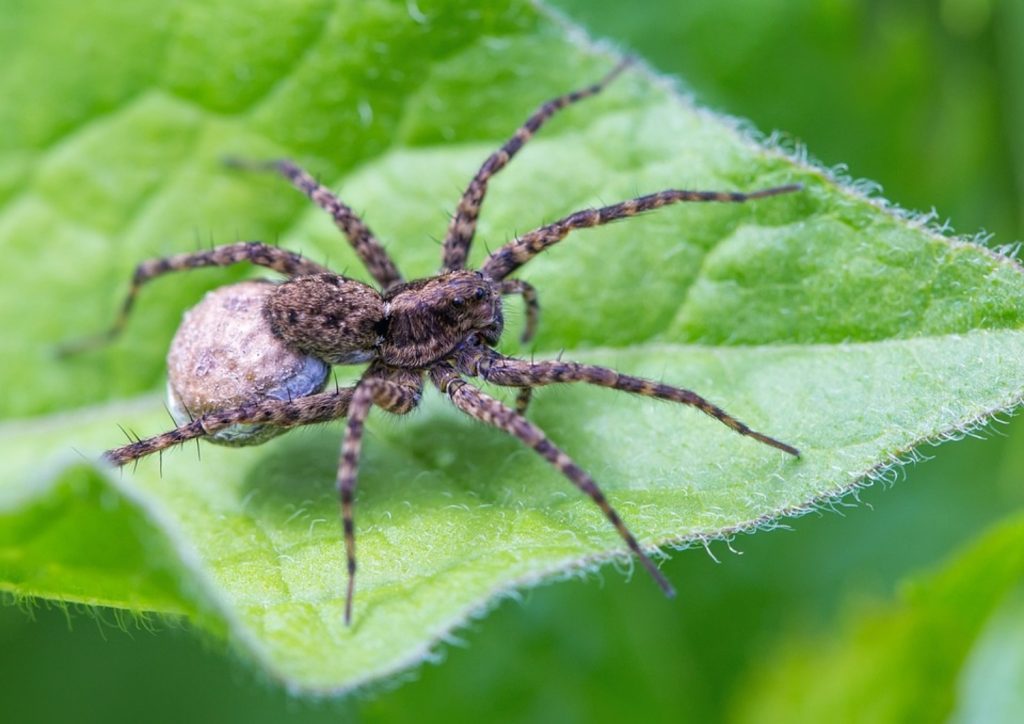
What happens once spider eggs hatch?
Once the spiderlings hatch within their egg sac, they remain there until their first molt, after which point they join the outside world. The spiderlings use their tiny fangs to tear a hole into the egg sac, sometimes with the help of their mother. If you haven’t noticed any spider eggs in your plant’s soil, you’ll have a better chance of spotting the spiderlings themselves. On the outside, the spiderlings stick together in a cluster for protection, surviving on the egg yolk sacs that are still in their stomachs.
If you happen to find an empty egg sac lying in your potted plants or flower beds, take a peek inside. You’ll probably see the shed skins that the spiderlings left behind from their first molt. Finding an empty egg sac is also a surefire sign that you’ve got spiders crawling around the place.
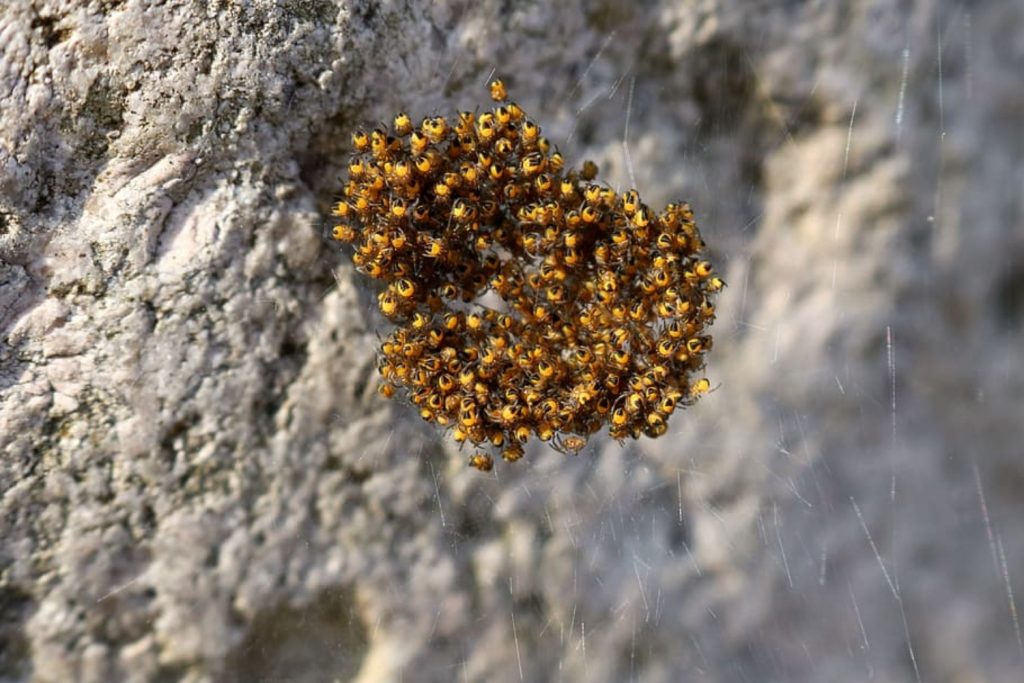
Checking for spider eggs in plant soil
Empty spider egg sacs are easier to find than those that remain unhatched. That’s because the spiderlings tend to push the egg sac up from the soil as they break free. If you want to check for spider eggs in plant soil, grab a small flashlight, a pencil or tweezers, and a magnifying glass and take a closer look.
Shine your light over the top of the soil, scanning the area for webbing. Spider silk is usually slightly shiny, so if you have spider eggs in your plant’s soil, the light will reflect off the webs. Use your pencil or tweezers to gently scrape the soil away and check for buried egg sacs. Larger spiders produce proportionately large egg sacs which you can see with your naked eye. But smaller spiders naturally produce smaller egg sacs, so use your magnifying glass to search for them.
Maybe you haven’t seen any egg sacs in the soil. However, the presence of adult spiders is also a sign that there are, or soon will be, spider eggs in your flowers. Check the plant’s foliage, too. Many spiders spin webs in leaves to catch prey, and you might spot them hiding in flower buds or where leaves meet the plant’s main stem.
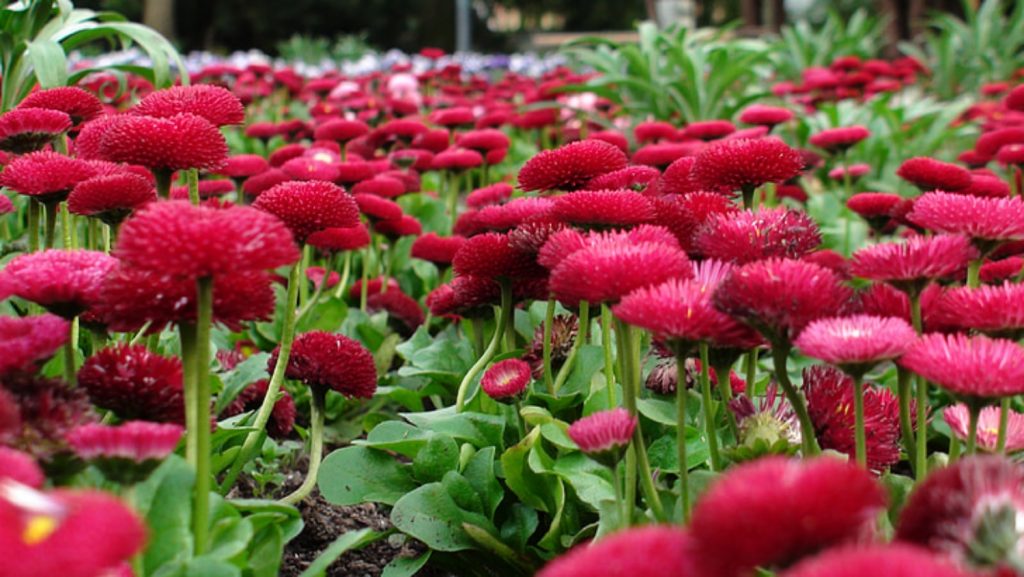
Spiders vs. spider mites: what’s the difference?
If you haven’t seen any spiders or spider eggs, but you’re finding lots of tiny webs primarily located on the undersides of leaves, then you’re probably dealing with a spider mite infestation, not a spider infestation. Although both spiders and spider mites belong to the Arachnid family, spider mites are an even greater threat to your garden than spiders. These tiny sap-suckers feed on the undersides of leaves, leeching plants of their food and causing their foliage to turn yellow and brown as a result.
Spider mites are so called because they create webbing, reminiscent of a proper spider web, on their host plant’s leaves to protect their eggs and young. Spider mites can also survive in the soil. Over time, a spider mite infestation can stunt a plant’s growth, resulting in poor foliage production, lack of flower buds, and even death. Fortunately, all of the measures that help remove spider eggs in plant soil will help fight and deter spider mites, too.
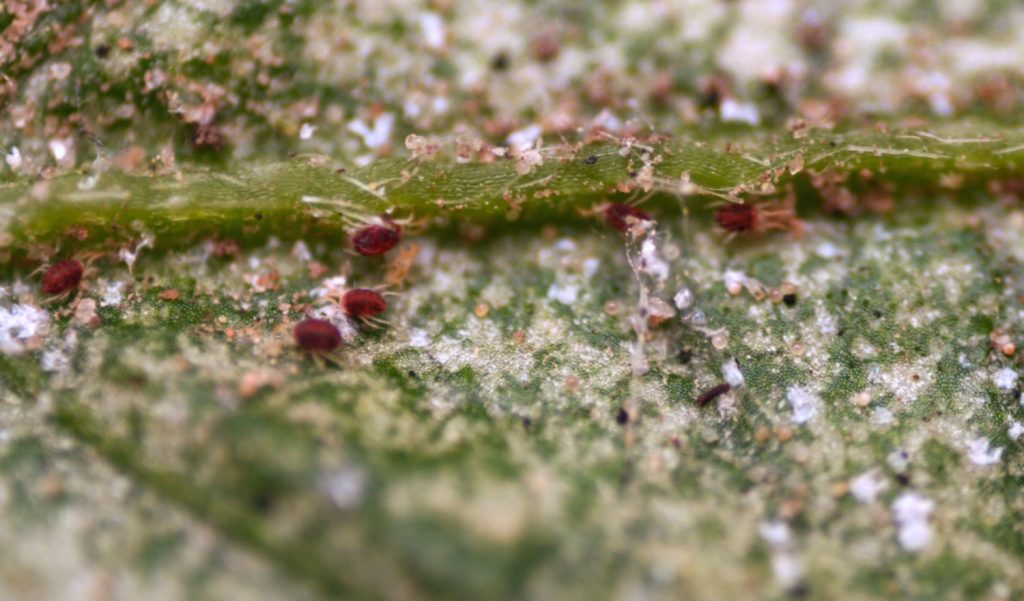
How to remove spider eggs in plant soil
Whether you’re dealing with a relatively small arachnid problem, or whether you’ve got a giant spider invasion on your hands, there are things you can do to keep the population of these pests to a minimum. Here are 10 ways to remove spiders (and spider mites, too) from your plant’s soil.
Let the soil dry out in between waterings
Spiders are drawn to moist, shady locations, which is why they tend to congregate in flower beds and potted plants. Foliage provides arachnids with protection from would-be predators, and the moisture helps keep them cool and hydrated. Additionally, the space beneath growing plants often goes undisturbed, so they’re a safe place for spiders to hide their egg sacs.
Damp soils insulate egg sacs, keeping them moist and flexible so they can continue to nourish the spiderlings inside. But egg sacs kept in dry soils quickly dehydrate. So if you want to remove spider eggs in plant soil, let it dry out thoroughly in between waterings. Water your plants deeply to keep them healthy and encourage strong root systems, but do so infrequently to avoid attracting the attention of unwanted arachnids.
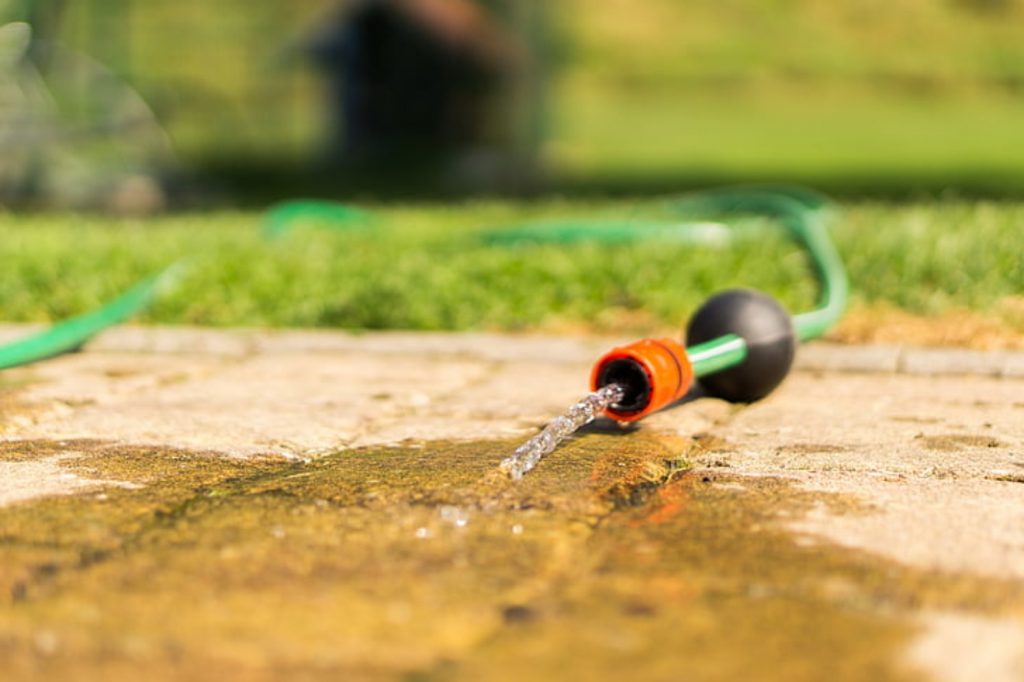
Prune your plants and remove debris
Although this is more of a preventative measure, it can still help you to remove spider eggs in plant soil by improving the soil’s ability to dry out completely. Low-growing branches trap humidity, keeping the soil damp and cozy for spiders and other pesky insects. But removing undergrowth improves air circulation, so the soil can dry up. Removing low-growing branches also makes it easier for predatory insects to access the spaces beneath your plants, where they can eliminate spider eggs for you.
In addition to pruning your plants, you should be sure to remove leaf debris from the soil in your flower beds. These organic materials create a natural mulch that traps moisture and creates an ideal home for spiders and their eggs. Removing that substrate from your garden, much as you would if you were dethatching your lawn, will help the soil below dry out more quickly. And once the soil dries up, any spider eggs hiding below will die within just a few days.
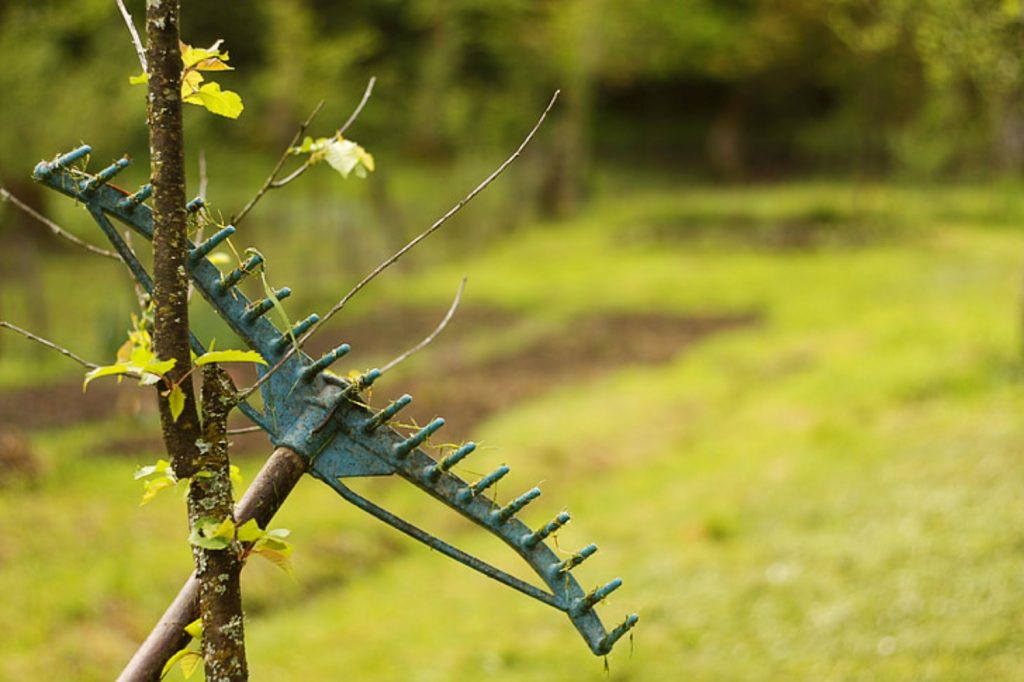
Repot plants growing in spider-infested soil
If your potted plants are absolutely infested with spiders, then your best bet is to simply repot them. Toss the contaminated soil in the garbage, replace it with new potting soil, and give your plants a fresh start. Remember to avoid overwatering the plants in the future so you don’t accidentally attract more spiders. Keeping the plants in a brightly lit area can also help deter insects.
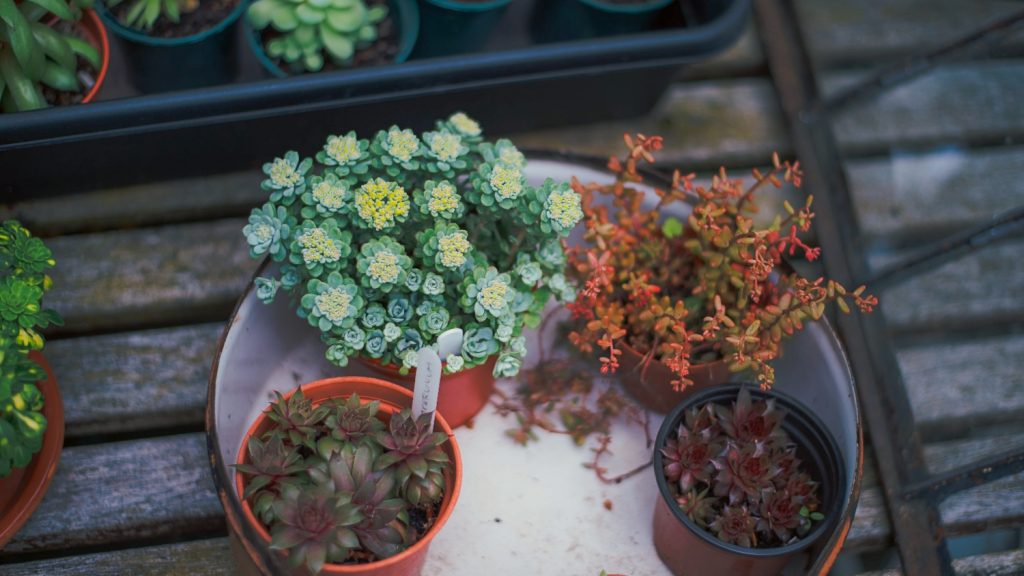
Hose the plants down
If spiders and/or spider mites have infested your plants, then simply hosing the plants down should be enough to repel the insects physically. Use a hose sprayer set to the strongest setting your plant can withstand without being torn up, and rub the foliage gently to wash the bugs away. Often, this measure alone is enough to deal with smaller spider populations. Once your plant has dried, apply the insecticide of your choice (more on those in a minute!) to prevent future infestations.
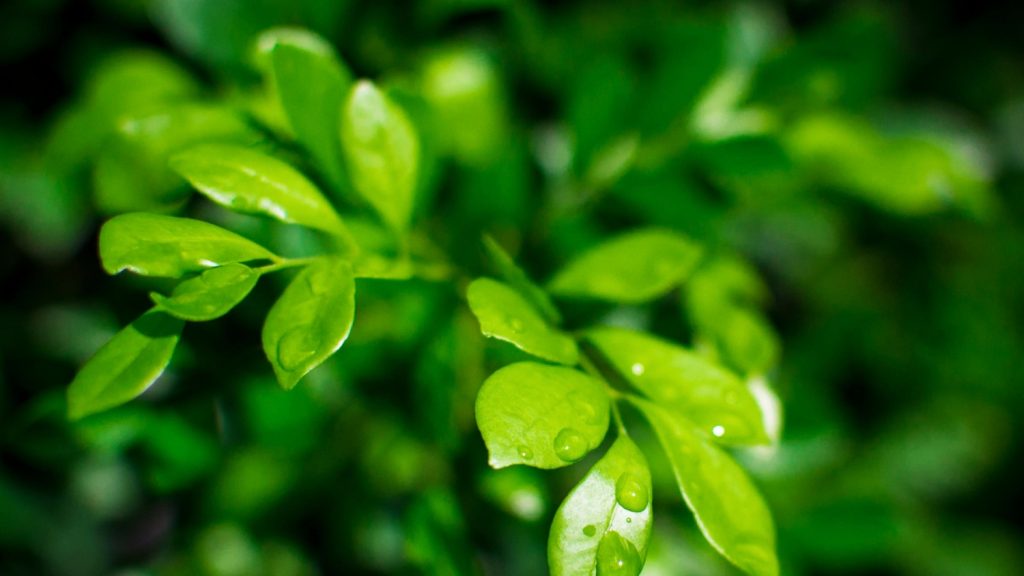
Vacuum the plants
As it turns out, your household vacuum is a good tool for removing spiders and their eggs. Obviously, you don’t want to run your Dyson over your plant’s soil. But by using the hose equipped with a brush attachment, you can gently scrub the plant’s foliage and suck up any spiders hiding there. Removing spiders, whether they’re freshly-hatched babies or large adults, will help you control the arachnid population and keep your plants insect-free.
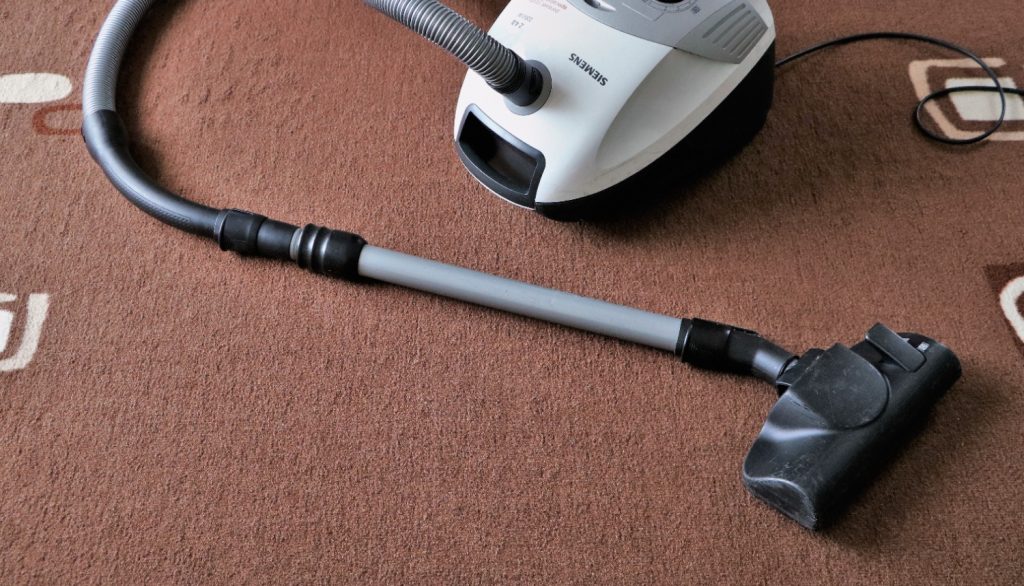
Release predatory insects
If you want to remove spider eggs from your plant’s soil, then why not use nature to your advantage? Ladybugs, lacewings, predatory mites, and nematodes can help you deal with your spider problem, and they can help keep other pests down, too. Purchase these predatory insects to release in your garden every spring and summer to patrol your landscaping and keep it pest-free. These bugs will not only prey on young spiderlings but will also search for spider eggs in plant soil and eat them before they get a chance to hatch.
Releasing predatory insects is both a preventative measure and a treatment strategy. Because these beneficial bugs feed on so many garden pests, spiders and spider mites included, there is no wrong time to introduce them to your garden.
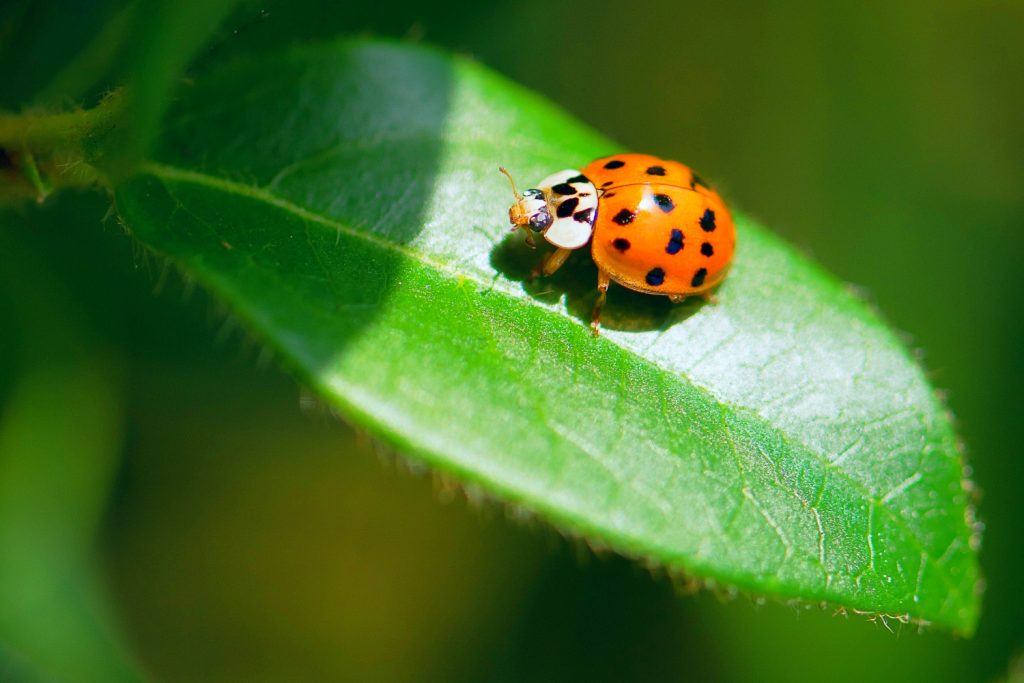
Sprinkle granulated crystallized insecticides onto the soil
If you want to remove spider eggs in plant soil fast, then purchase a granulated crystallized insecticide and sprinkle a thin layer around your flowers. Look for powdered insecticides that contain the ingredient imidacloprid, which is a systemic pesticide. Plants absorb the chemicals and insects ingest the poison when they feed on the host’s foliage. Of course, getting the powder sprinkled on them won’t do spiders or other insects any good, either. Imidacloprid paralyzes insects and kills them even months after the initial application. If you choose to use a granulated crystallized insecticide to remove spider eggs in plant soil, water the plants well after applying the pesticide to activate it.
Spray a neem oil dilution
Neem oil contains compounds called azadirachtins which disrupt the hormone systems of spiders, spider mites, and many other insects, preventing the pests from reproducing and effectively reducing their populations. One of the main benefits of spraying plants with a neem oil dilution is that it is all-natural. Neem oil is a safe, chemical-free alternative to many commercial pesticides, and because it can kill insects and prevent them from reproducing, it has been shown to be just as effective.
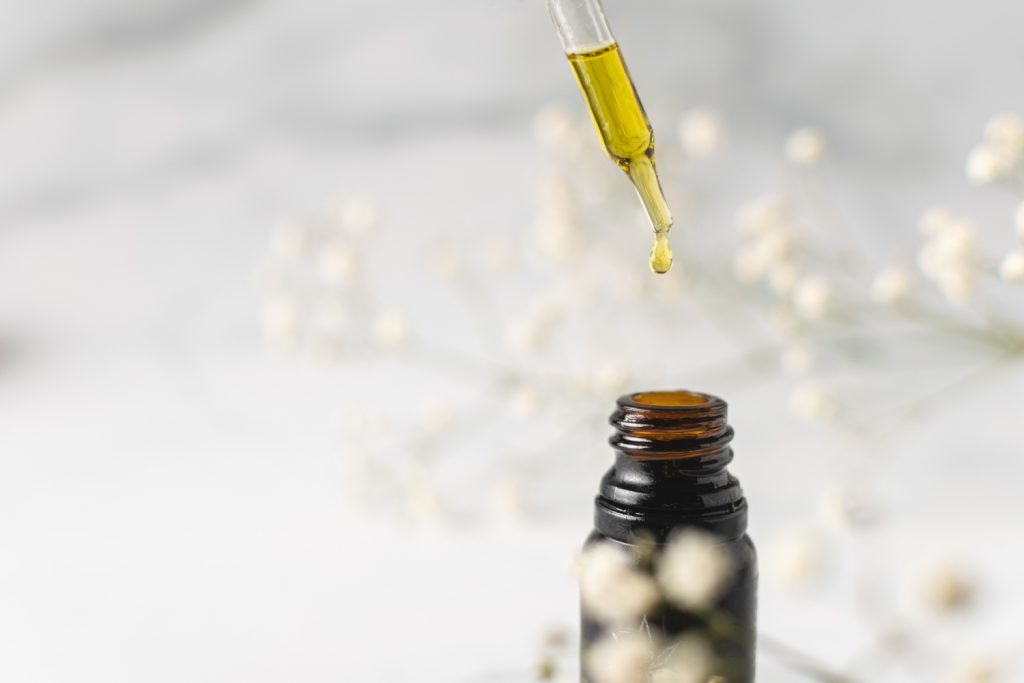
Try insecticidal soap
Another natural alternative to chemical pesticides is insecticidal soap. This substance works by penetrating the protective outer layer of soft-bodied insects and causing the cells to break down, leading to dehydration and, shortly thereafter, death. Insecticidal soap has been used to control pest populations for well over 200 years. Modern insecticidal soaps first hit the market in the 1930s and 1940s, and contain a mixture of potassium, sodium, and fatty acids — ingredients that are considered to be much safer than harsh chemicals.
There is a catch when it comes to using insecticidal soap to remove spider eggs in plant soil, however: the liquid must come into contact with the insect. Once insecticidal soap dries, it is ineffective. So you’ll need to reapply insecticidal soap every day or every other day for a prolonged period to eliminate spiders, spider mites, and any other insects you may be dealing with.
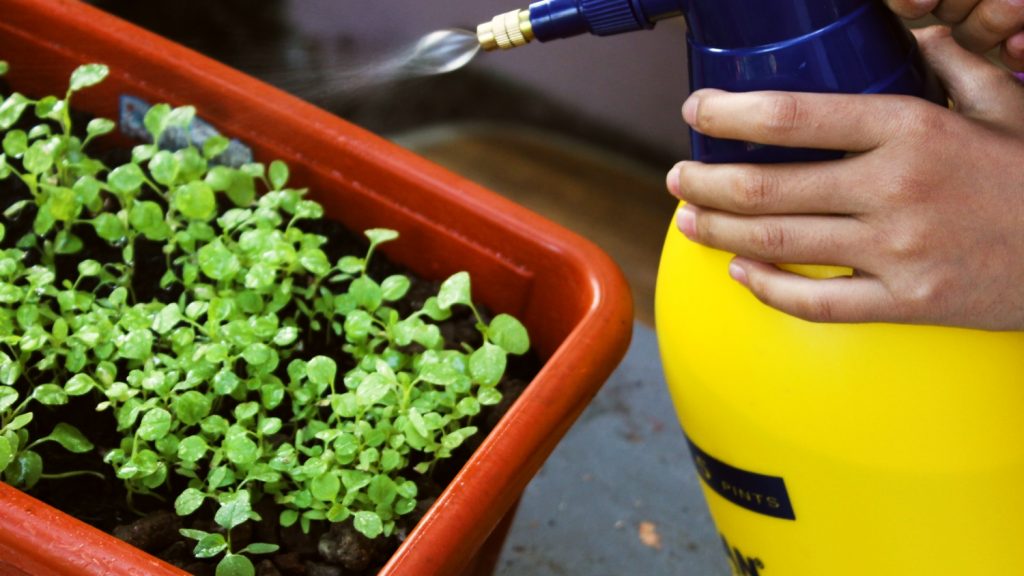
Use hydrogen peroxide
Plain old hydrogen peroxide can come in very handy when it comes to removing spider eggs from your potted plants and flower beds. A hydrogen peroxide dilution will fizz the moment it comes into contact with the soil. This not only breaks up insect eggs but also temporarily changes the pH of the soil, making it slightly acidic before the hydrogen peroxide breaks down into its baser elements. Hydrogen peroxide can be used to remove spider eggs in plant soil every so often, but should not be used regularly, as this can bleach the soil, killing off beneficial bacteria and altering the soil pH over time.
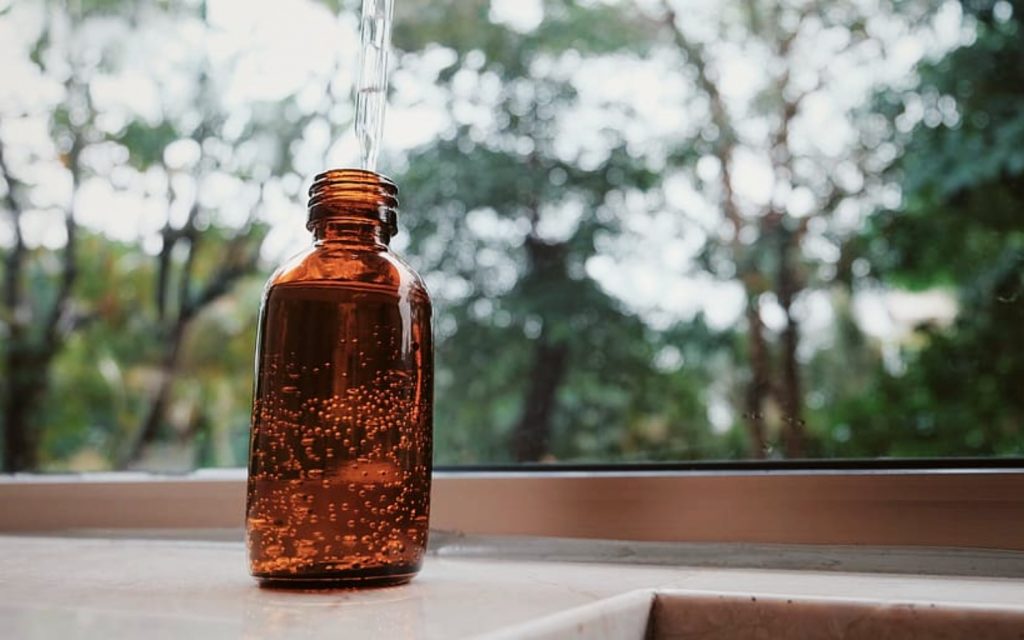
Should you remove spider eggs in plant soil?
Truth be told, spiders don’t pose much of a threat to plants. In fact, the opposite is true. Spiders can help control the populations of damaging insects, including gnats, aphids, thrips, and more, keeping your plants healthy and happy. So if you only have a few spiders on your plants, or if your plants are growing outside, then allowing them to take up residence in the soil can help prevent other more damaging bugs from creating a much more serious problem.
If, however, your plants are kept inside, or if you’re noticing a large number of spiders loitering on their foliage, then that may warrant some action on your part. Nobody wants thousands of spider babies running amok in their homes. Besides, some spiders, like black widows and brown recluses, are venomous, posing a serious threat to people and pets.
Ultimately, whether you choose to remove the spiders living in your plants or simply leave them alone and let them be is entirely up to you. On the other hand, if your plants are infested with spider mites, not real spiders, then you’re left with no choice. You’ve got to act fast to eliminate these pesky insects before your plant’s health begins to suffer. Even a small handful of spider mites can cause serious damage to a plant. So the sooner you act, the better!
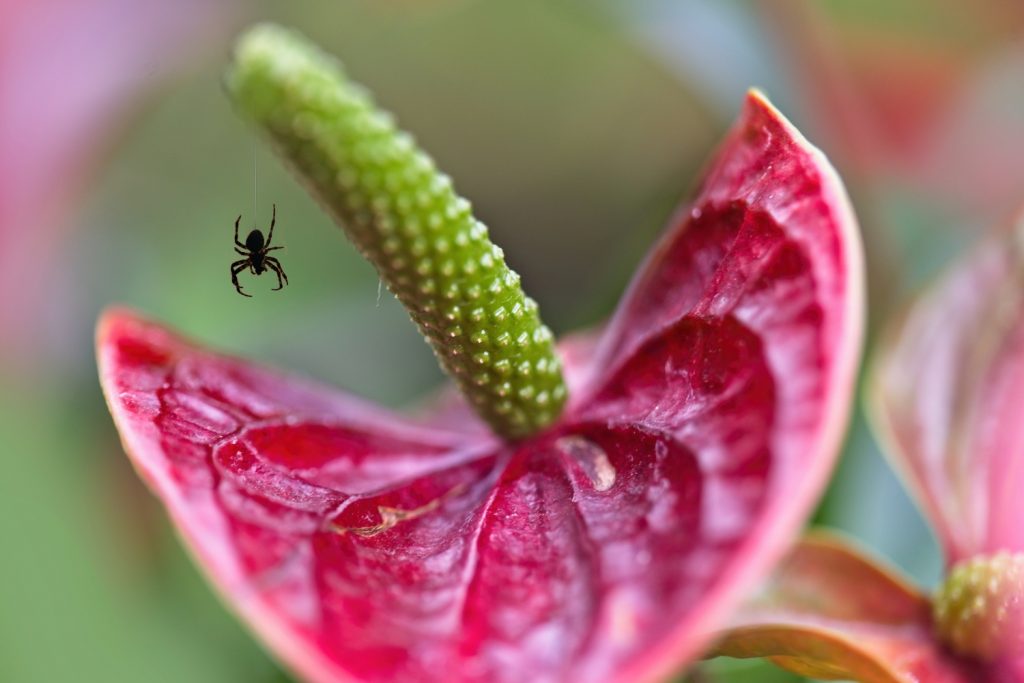
More tips and tricks for preventing spider infestations
Spiders may well be good for your plants, but they’re also icky, and not something you necessarily want in your home. So to prevent spiders from invading your plants, be sure to dust the foliage regularly. Use a damp cloth to wipe the plant’s leaves down and remove spiders, their webs, and their eggs. Keeping your plants in a brightly-lit area will also discourage spiders from hanging around since they prefer dark, secluded spaces.
Spray your plants down with a neem oil dilution once a month to prevent future spider infestations. Be sure to apply a layer of the dilution to the soil as well to kill spider eggs in the plant’s soil, and any other damaging insects that may be lurking there, too. Also, consider releasing Bacillus thuringiensis israelensis (BTI) into the soil. This beneficial bacteria breaks down insect larvae, including spiderlings, once the eggs have hatched.
Of all of the insects that could infest your plants, spiders may be the scariest. But they’re also among the easiest to eliminate. With a few precautions and easy treatment methods, you can keep spider populations down with ease.
